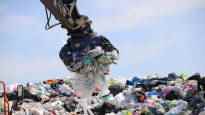In the United States, the amount of plastic that ends up being recycled has been steadily decreasing, while the production of new plastic products is increasing.
The large-scale recycling of plastic is just a myth that the industry maintains in order to polish its public image, according to a recent study by the US branch of the environmental organization Greenpeace.
According to the study, of the 51 million tons of plastic waste produced by US households last year, only 2.4 million tons, or five percent, ended up being recycled.
Before this, the amount of plastic that ends up being recycled was only ten percent in the United States in 2014, even at its best. Since then, the amount has steadily decreased, especially after China stopped accepting plastic waste from Western countries in 2018.
At the same time, the production of new plastic products, i.e. plastics that do not use recycled plastics, has been growing all the time.
– Industrial groups and large companies offer recycling as a solution. At the same time, they avoid all responsibility for ensuring that recycling really works, said a Greenpeace representative Lisa Ramsden.
Recycling is expensive
According to Greenpeace’s research, only two types of plastic, for example PET plastic used in water and soft drink bottles and HDPE plastic used in shampoo and soap bottles, for example, are widely recycled.
About a fifth of PET plastics ended up in recycling, and more than ten percent of HDPE plastics. Less than five percent of the remaining plastic grades are recycled.
The main reason for the failure of plastic recycling is its cost. It will continue to be cheaper for the industry to produce new plastic packaging than to use a recycled product. In addition, sorting out different types of plastic from a huge mass is difficult. Recycling itself is also harmful to the environment and produces microplastics. At the same time, it exposes recycling plant workers to dangerous compounds.
According to Greenpeace, a more sustainable solution than recycling would be to invest in the reuse of products.
– It’s not even a new concept: that’s how milk was delivered to us before, in a bottle. After it was emptied, the bottle was returned, disinfected and used again, Ramsden reminds.
